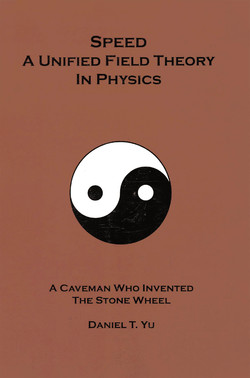Читать книгу Speed - Daniel Yu - Страница 9
На сайте Литреса книга снята с продажи.
Оглавление3
Space Has Infinite Dimensions
In the history of mathematics, the seventeenth century is a very important era. Humans study trigonometry, geometry, and algebra. They are all linear theories. Basic mathematical knowledge was developed in that century.
In the eighteenth century, humans studied motion, speed, and force. Isaac Newton as well as a German mathematician Gottfried Leibniz devoted their entire lifetime to the genius invention of calculus, which we only need few months to learn. Newton and Leibniz applied vector and quantity with direction and magnitude. Force and velocity are components of direction and magnitude. The three-dimensional space concept was applied in physics for over three hundred years without the knowledge that space has “at least” four dimensions.
In the nineteenth century, humans learned differential equations, orthogonal functions, and topology. They studied the family of all open subsets of a mathematical set, including the set itself and the empty set, which is closed under a set union and can have finite intersections. The topology is complicated enough even without mentioning the complexity of intersecting with the infinitely large, such as at the universe.
In the twentieth century, humans studied differential geometry, tensor calculus, and N dimensions in space and tried to understand the impact of string theory in physics and mathematics.
At the start of the twenty-first century, humans studied infinite dimensions in terms of linear theory in space geometry and topology.
From the history of mathematics, we learn that the concept of dimension originated in the seventeenth century and was modified in the nineteenth century and the twentieth century. Einstein redefined the dimensions of space to show that a cube has four, rather than three, dimensions in space-time. Since then, scientists redefined space from four dimensions to N dimensions. Now, we think that space may have infinite dimensions.
Higher Space Dimensions
Dimension has these meanings:
1 Dimension means measurement of size in one or more direction (e.g., length, width, or height).
2 In mathematics, dimension is a coordinate used with others to locate a point in space and time.
3 In physics, dimension is an element of vector space that defines physical quantity with direction of any group of properties or magnitudes (e.g., force or velocity is made up of the components of direction and magnitude).
We talk about point, line, length, width, height, size, force, velocity, vector, and direction, but we never talk about the meaning of a surface in space. Surface is a good unit of measure in space because it represents point, line, curvature, size, and various directions. Using surface makes it easy to understand dimension.
The history of higher-space dimensions theory dates back to Einstein’s failed concept of unified field theory in physics. In 1919 and 1926, Theodor Kaluza and Oscar Klein made a mathematical proposal that a unified field theory may exist in higher space dimensions. Einstein’s relativity theory and some of the behavior of quantum mechanics would became indistinguishable in higher dimensions. The question is how much higher the dimensions need to be in space. When time reaches the edge of infinitely large (∞e), where e dignifies “edge,” the space needs to be infinitely small (0e). We need to understand that space has infinite dimensions to explain the phenomenon. Are we able to prove mathematically that space has infinite dimensions?
Consider the following statements:
1 Space has an infinite number of shapes at large (∞e) and at small (0e).
2 Space has an infinite number of volumes at large (∞e) and at small (0e).
3 Space has an infinite number of locations at large (∞e) and at small (0e).
4 Space has an infinite number of directions at large (∞e) and at small (0e).
These statements imply that space has an infinite number of dimensions at large and small. You may not agree with me that space has infinite dimensions, but the way you theorize to understand dimensions is different from the way I theorize to understand dimensions. Textbooks teach that one dimension is a line, two dimensions is a surface, and three dimensions is a cube. The concept of dimensions was developed in accordance with the number of straight lines. A straight line only represents length and direction, which has nothing to do with dimension, unless dimension is equivalent to the meaning of direction, in physics, as vector. A fixed finite value of length in space-distance will neither expand nor contract regardless of the speed of light. If we explain that a surface represents a dimension and that surface is facing a direction, as does a vector in physics, then, perhaps, it can be grasped that space has infinite dimensions in directions or surfaces. Now I will prove, mathematically, that space has infinite dimensions in the next paragraph.
The Correct Concept of Dimension
It’s a matter of fact: two straight lines cannot form a surface. It takes at least three lines to form a surface. Two lines can only form an angle. Among angles, the most important angle is the basic unit measure of one degree (1°), which seems small but steadily expands as distance increases. (See diagram 1.)
Diagram 1
Precision Angles in Nanosecond
Precision technology and motion simulation technology are highly dependent on this nanoscale angle concept (arcsecond) at the edge of infinitely small (0e).
A cube does not have three dimensions, but six dimensions (or surfaces), and twelve vector directions. Any object (or an imaginary space) has at least four dimensions. (See diagram 2.)
Diagram 2
